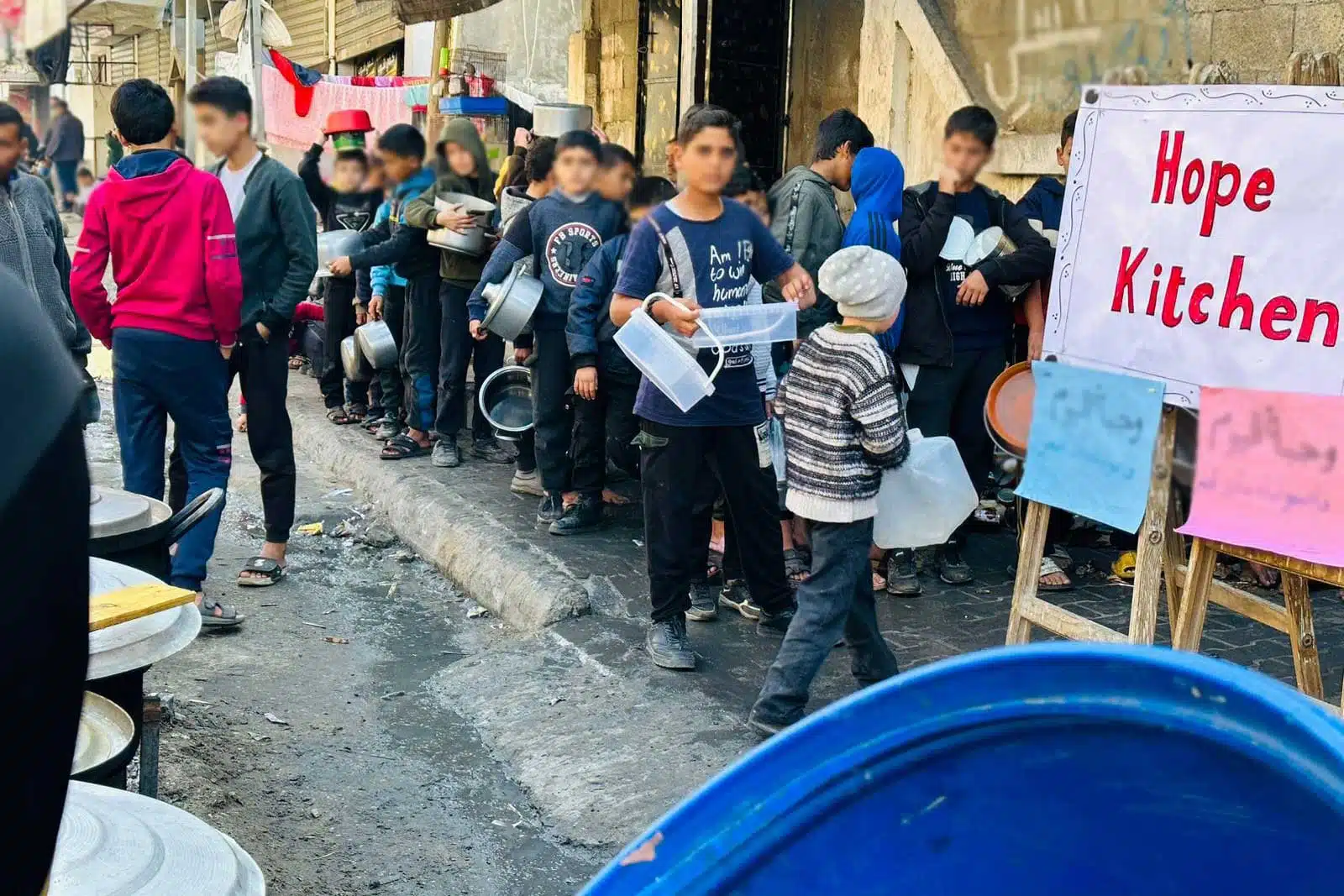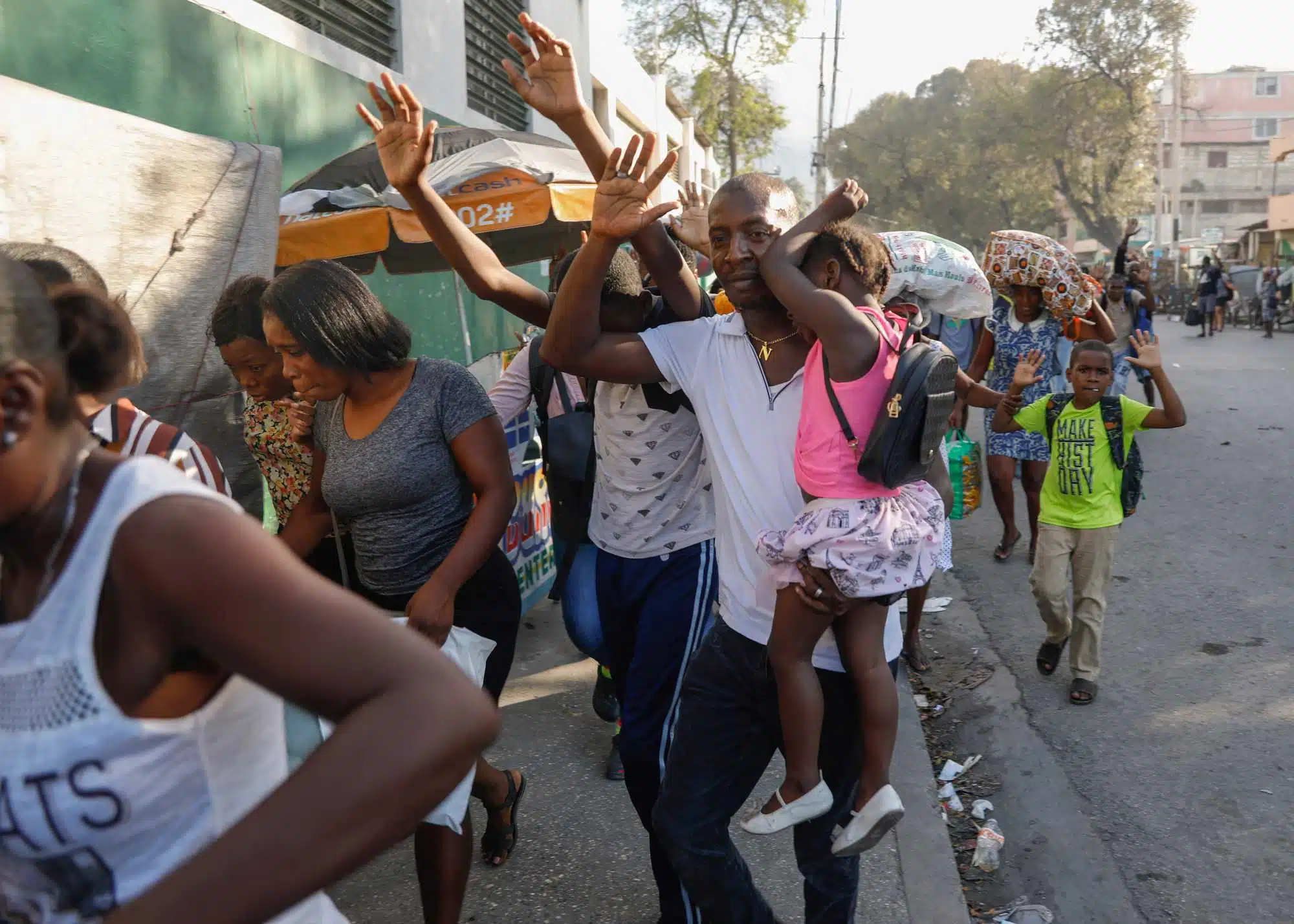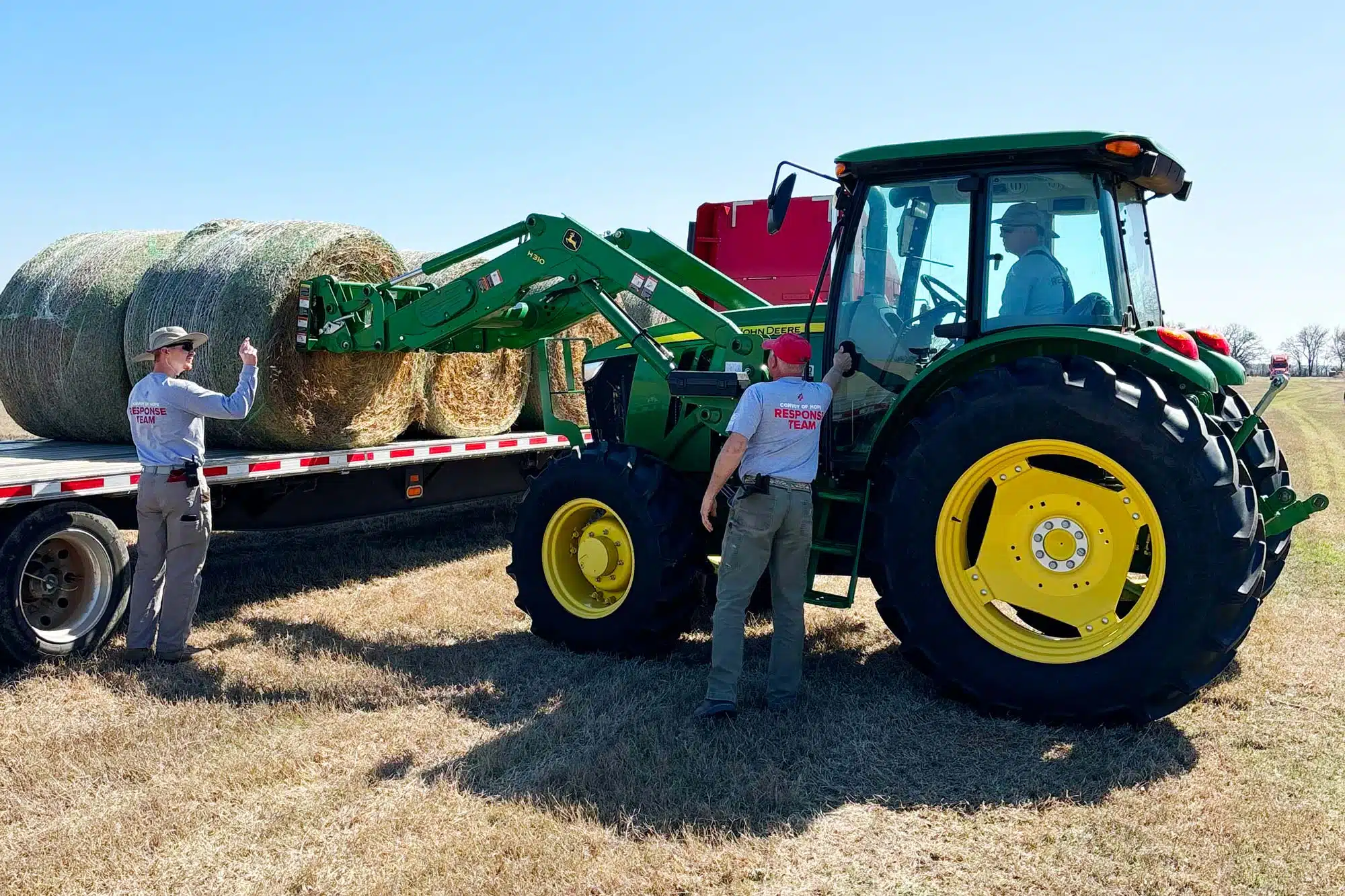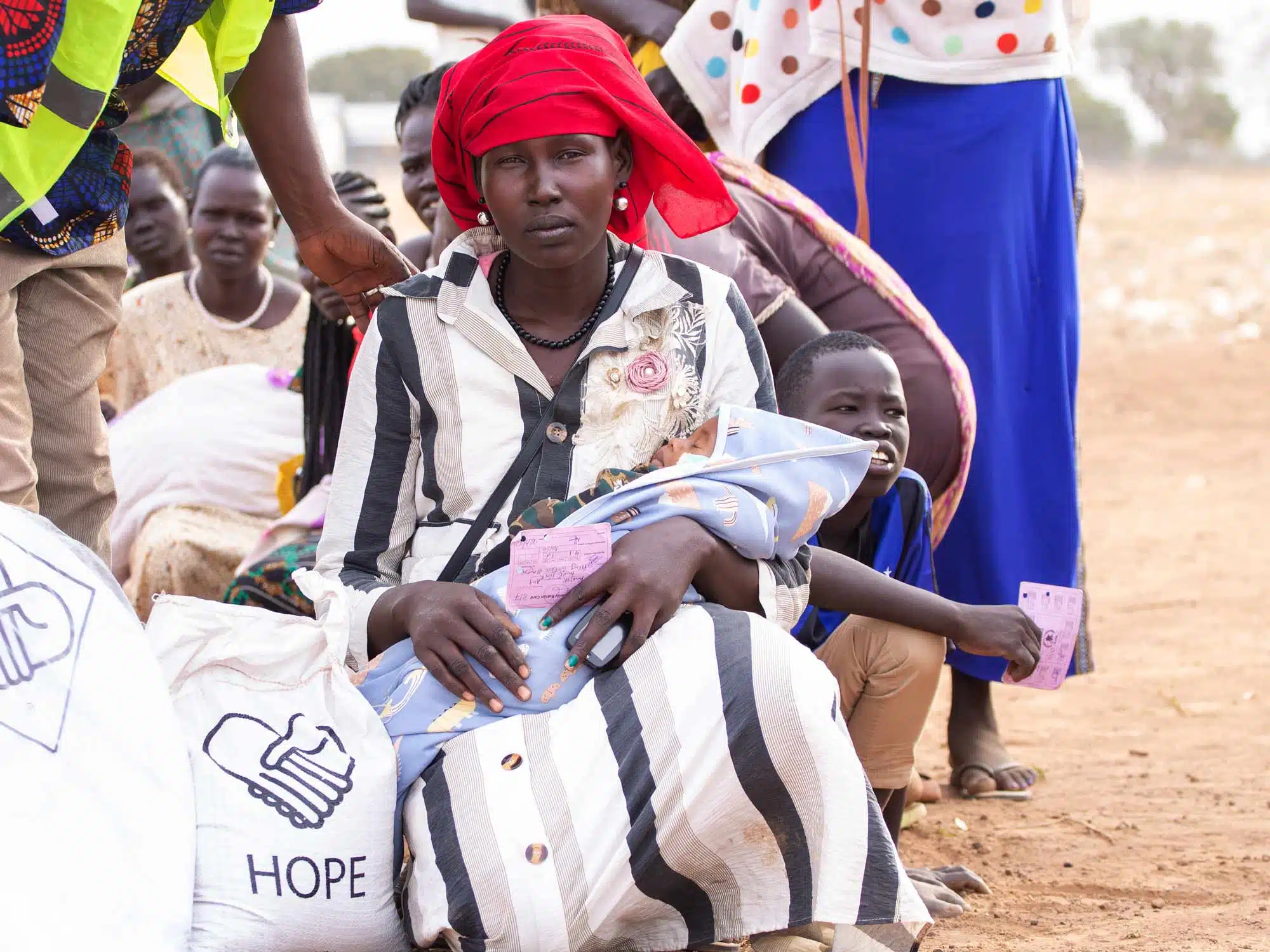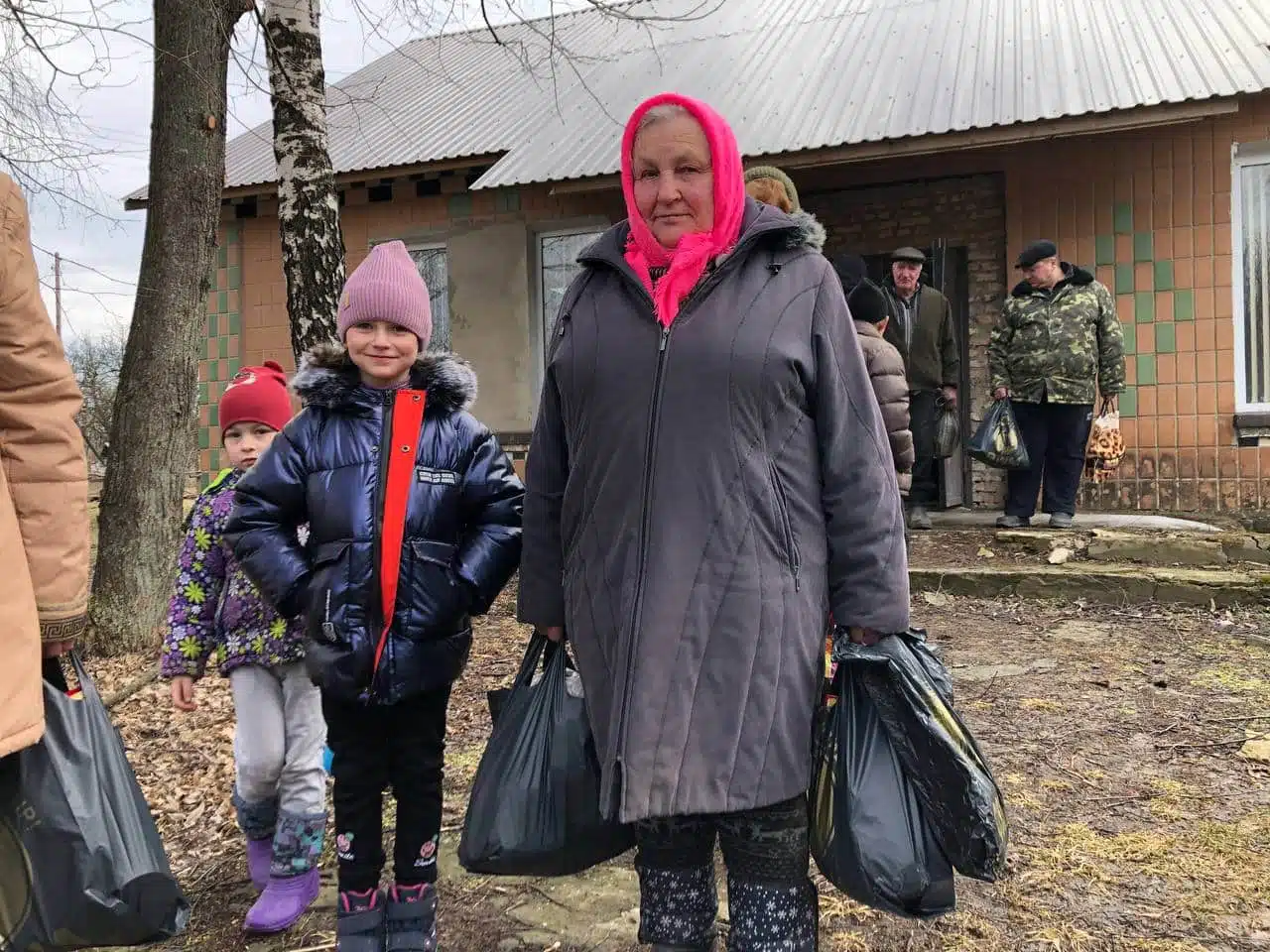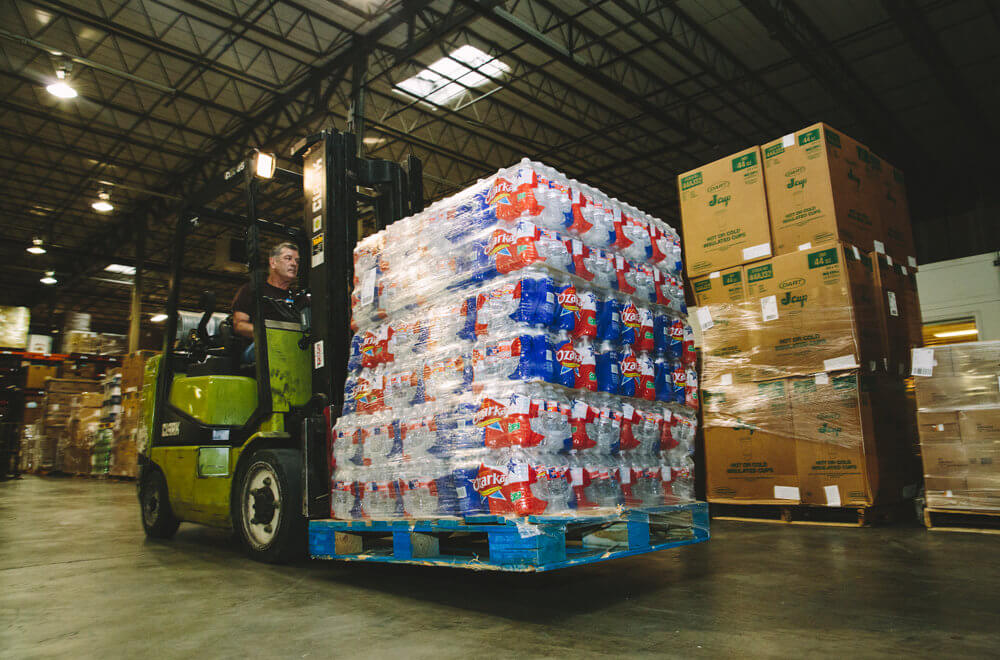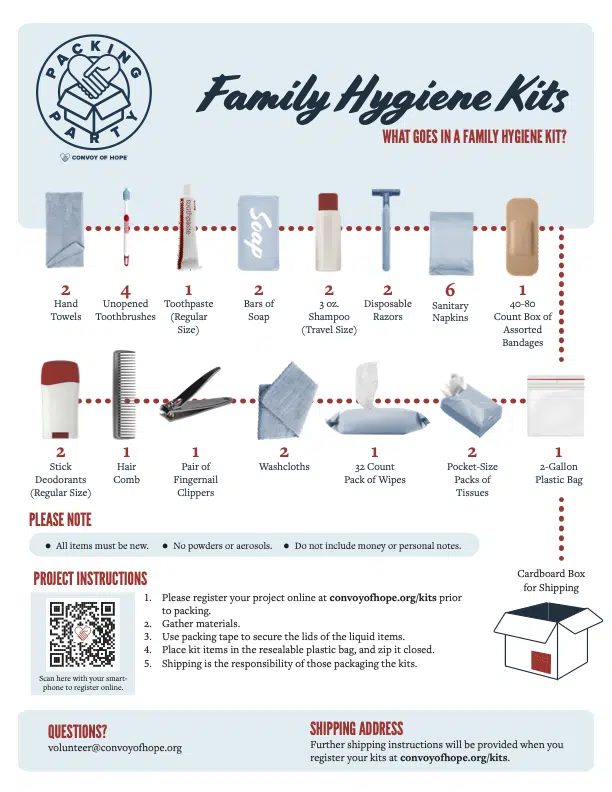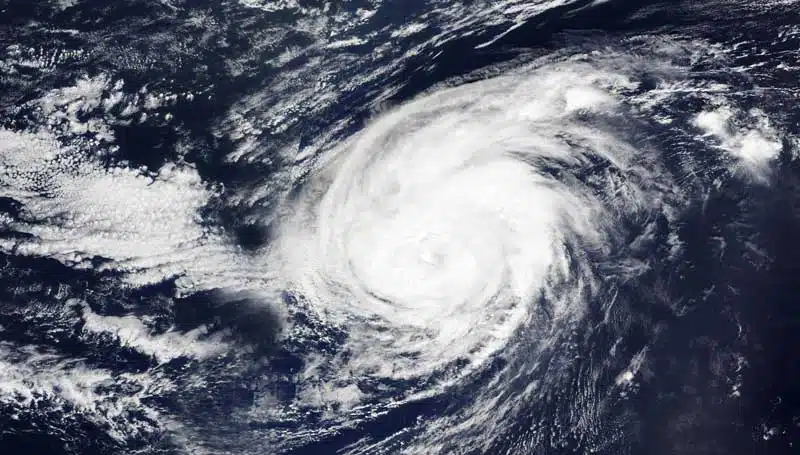The unpredictable nature of emergencies has spurred many to equip themselves with a valuable ally — an emergency backpack.
When disaster strikes, having a bug out bag for emergencies allows you to evacuate swiftly, having all essentials on hand.
Websites like Ready.gov and Echo-Sigma give valuable information on the importance of a survival kit.
When it comes to creating yours, what do you need in an emergency backpack?
This guide* will break down:
- • The top 10 essential items to include in your emergency kit backpack.
- • Real-life instances when those items will prove vital.
- • Where you can purchase ready-made backpacks to save you the hassle of building your own.
Let’s dive in!

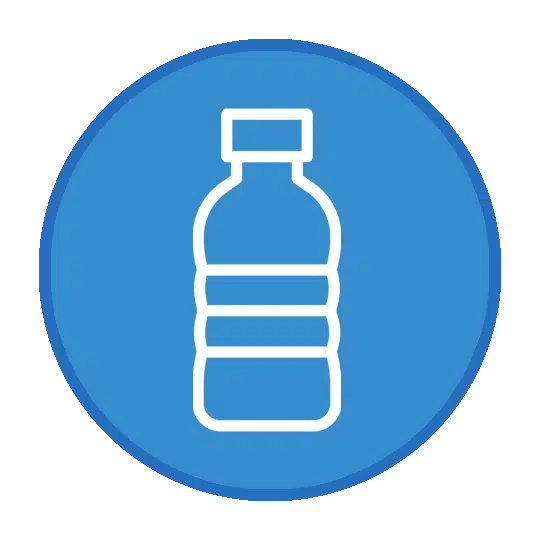
1. Water & Water Purification Supplies
In the hierarchy of human needs during emergencies, water indisputably claims the top spot. The significance of water and purification supplies in an emergency backpack cannot be overstated. Why is it so crucial?
For starters, while a human can survive weeks without food, we can only last about three days without water.
Dehydration can set in even faster during stressful situations or in extreme climates, leading to:
- • Cognitive impairment.
- • Physical weakness.
- • Life-threatening conditions, in severe cases.
But it’s not just about quenching thirst; water is also essential for basic hygiene. Cleaning wounds, for example, is vital to prevent infections, especially in disaster scenarios where medical aid might not be immediately accessible. In such situations, purified water becomes nonnegotiable.
Now, let’s address the “purification” aspect. In many emergencies, especially natural disasters like hurricanes or floods, local water sources can become contaminated.
Drinking this water, filled with potential pathogens or harmful chemicals, can lead to waterborne diseases.
This is where purification comes into play. Purification tablets, portable filters, and even UV purifiers can rid water of most harmful contaminants, making it safe for consumption.
How much water is enough?
The general recommendation is to store at least one gallon of water per person per day for a minimum of three days. This accounts for drinking needs. You should store additional water for hygiene purposes.

The Power of Preparedness
Ensure your family is protected in the face of unexpected challenges with our Disaster Preparedness Guide.
Topics Include:
— Family Communication Plan
— Evacuation Plans
— Care for Pets
— Weather Monitoring
Download Our Disaster Preparedness Guide!
Start your journey to preparedness now and download the guide to learn practical steps for facing any disaster confidently.
"*" indicates required fields

2. Nonperishable Food
Imagine being caught in a situation where you have shelter and water, but nothing to eat. As the hours tick by, hunger gnaws at your energy, concentration, and overall ability to think clearly. This scenario underscores the importance of including nonperishable food on your emergency backpack list.
At its core, food is the body’s fuel.
It provides the energy we need to …
- • Think
- • Move
- • Act
… all vital capacities during crises.
And while the human body can endure without food longer than it can without water, the absence of sustenance can be mentally debilitating, leading to decreased alertness and decision-making capabilities.
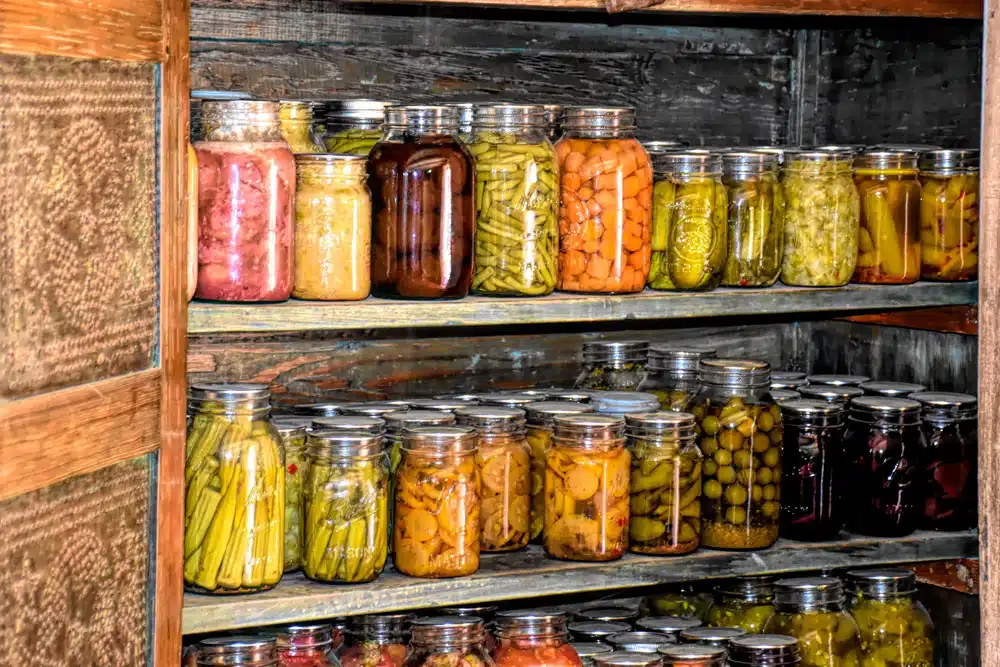
Nonperishable foods, by definition, are items that don’t require immediate refrigeration and have a long shelf life.
This makes them perfect for emergency scenarios where access to fresh produce or cooking facilities might be compromised. Think canned vegetables, protein bars, dried fruits, nuts, or packets of instant noodles.
Besides their longevity, there’s another factor that makes these foods indispensable: their nutritional value. In emergencies, you want foods that not only fill the stomach but also offer substantial energy.
High-protein, high-calorie items like nut butter or protein bars can be essential in maintaining stamina during challenging situations.
While choosing nonperishable foods for your emergency backpack, it’s vital to consider dietary needs and restrictions. An emergency is not the time to grapple with allergic reactions or dietary discomforts. With a backpack’s limited capacity, look for calorie-dense items in the smallest containers.
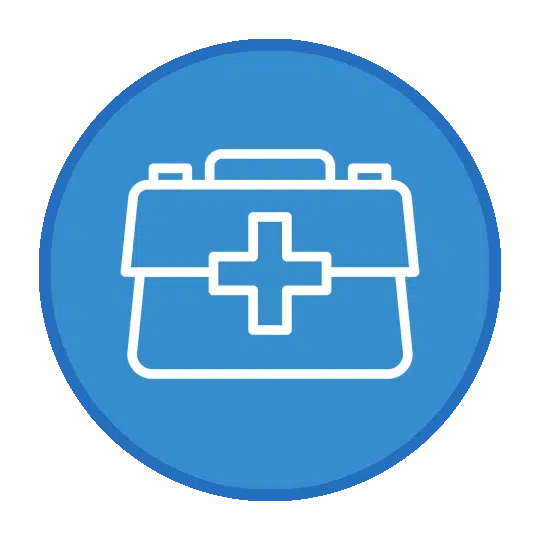
3. First-Aid Kit
Emergencies, by their very nature, come unannounced. The risk of injury is elevated, whether it’s a scratch or cut that can become infected, or more serious wounds such as broken bones.
Herein lies the paramount importance of the first-aid kit — an absolute must-have in every deluxe emergency backpack.
When disaster strikes, medical help might not be immediately at hand. Hospitals can become overwhelmed, and you might be stranded in a location far from any medical facilities. In such critical moments, the first-aid kit becomes your first line of defense.

First-aid kit items should extend beyond treating cuts and bruises to include:
- • Pain relievers.
- • Burn creams.
- • Tweezers (to remove splinters or debris from wounds).
- • Essential medications for individuals with specific health conditions.
Remember, emergencies can exacerbate underlying health problems, so having medication on hand can be lifesaving.
A first-aid kit offers an additional and invaluable benefit: peace of mind.
Knowing that you’re equipped to handle minor medical situations can impart a significant psychological boost, helping you maintain calm and clarity in the face of adversity.
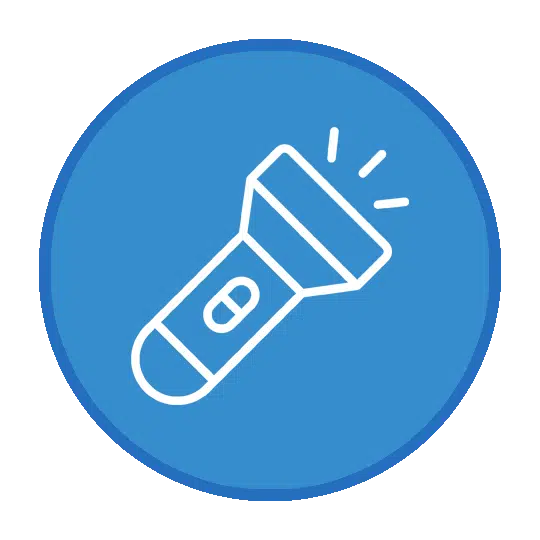
4. Flashlight & Extra Batteries
In the unsettling silence that often follows disasters, darkness can be a formidable adversary. Shadows play tricks on the mind, the unknown feels even more intimidating, and tasks that seem simple in daylight become herculean challenges.
This is why the humble flashlight, supported by its loyal companions — extra batteries — holds an esteemed position in any emergency backpack.
When the grid goes down, as is often the case in natural disasters or power outages, artificial lighting becomes a precious commodity.
A flashlight becomes an essential tool for:
- • Navigating through debris.
- • Reading emergency instructions.
- • Signaling for help.
- • Even just providing comfort to scared little ones.
Consider the aftermath of a tornado: Power lines are down, night has fallen, and you need to ensure the safety of your dwelling or perhaps evacuate to a safer location.
In the pitch black, the beam of your flashlight pierces through the darkness, providing clarity and direction. It’s not just a tool — it’s a beacon of hope, illuminating the path forward.
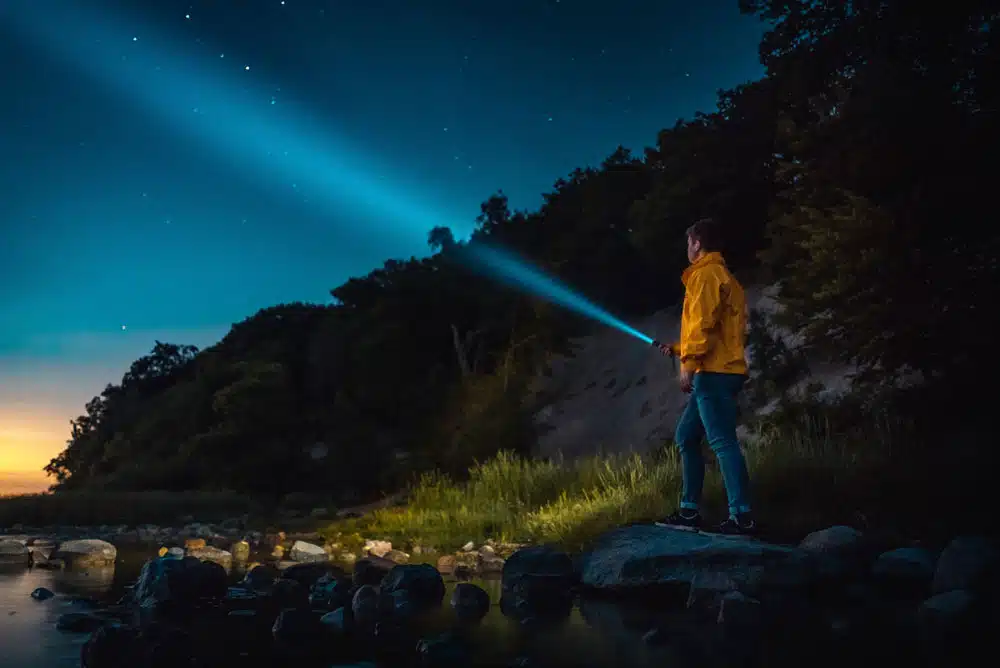

5. Multipurpose Tool
The unpredictability of emergencies demands versatility in our response, and there’s no single item more adaptable to diverse challenges than the multipurpose tool.
Often compact, yet astonishingly functional, this device is the Swiss Army knife standing guard in your emergency backpack, ready to tackle a myriad of tasks.
Imagine being trapped in a post-storm scenario, where fallen debris has blocked exits. Or perhaps you need to cut a piece of rope for a makeshift shelter. The sharp blade of the multipurpose tool comes to the rescue.
If a broken water pipe needs immediate attention, the tool’s pliers become invaluable. From opening cans of food to mending damaged gear with its screwdriver, this tool’s adaptability is nothing short of remarkable.
Moreover, it’s not just about physical tasks. The psychological boost that comes from knowing you have a tool capable of addressing various challenges cannot be overstated. It’s a sense of empowerment, a reassurance that you’re not entirely at the mercy of your environment.

6. Emergency Whistle
Amidst the cacophony of a crisis, being heard can be as crucial as being seen. Enter the emergency whistle — a small yet potent tool in your emergency backpack arsenal.
Its piercing sound, capable of cutting through loud noises and vast distances, can make all the difference when trying to signal for help.
Visualize a scenario where you’re lost in dense woods, and shouting continuously isn’t just tiring but also less effective.
A blast from your emergency whistle can carry much farther, alerting rescuers or fellow campers to your location.
Similarly, in urban settings following natural disasters like earthquakes or floods, survivors could be trapped beneath debris.
Here, the energy-efficient blow of a whistle can alert rescuers far more effectively than screams or hand signals alone.
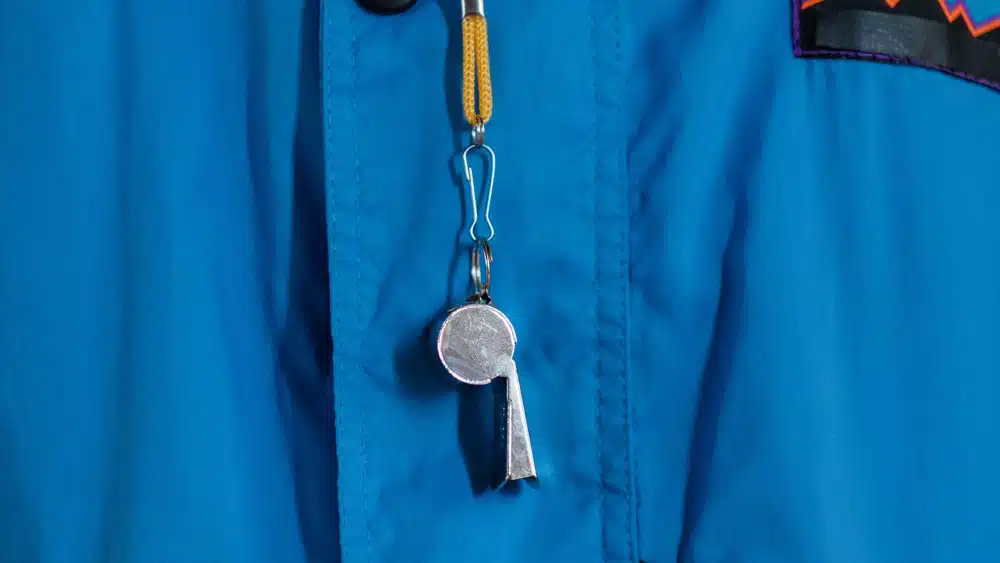
But its utility isn’t limited to getting attention. The consistent sound pattern from a whistle can also serve as a rhythmic guide for groups trying to stay together or move in coordination.
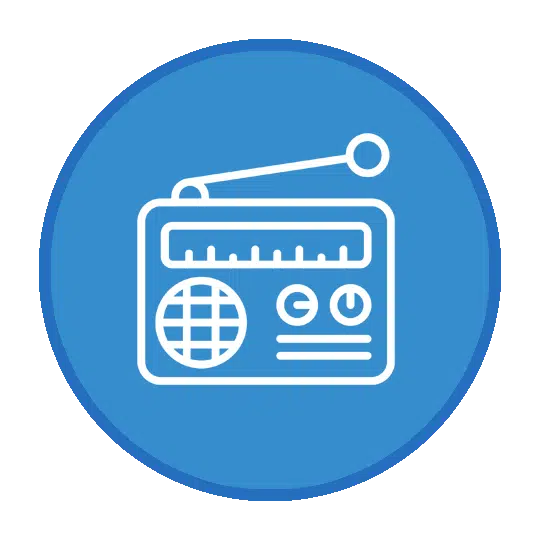
7. NOAA Weather Radio
In an era dominated by smartphones and digital connectivity, one might question the relevance of a radio. But when disaster strikes, and conventional communication networks falter, the NOAA Weather Radio emerges as a lifesaver, offering real-time updates directly from the experts.
Specifically designed to provide the public with the latest weather updates, warnings, and emergency alerts, this radio connects you to the National Oceanic and Atmospheric Administration’s broadcasts.
During severe weather events like hurricanes, tornadoes, or floods, receiving timely information is crucial.
Knowing the storm’s …
- • Trajectory
- • Intensity
- • Or when it’s safe to leave shelter
… can make a monumental difference in decision-making.
What sets the NOAA Weather Radio apart is its dedicated frequency, ensuring that even when commercial stations are off-air, it continues to relay vital data. Furthermore, many of these radios come equipped with alert features that can wake you up in the event of additional emergencies.
You should seriously consider adding either a battery-powered or hand-crank radio — which doubles as a charger for your cell phone — to your backpack.
Be aware of organizations in your community that offer assistance in an emergency event. As one example, Convoy of Hope is a nonprofit that partners with local churches and businesses to provide essential resources following an emergency.

8. Navigational Supplies
Emergencies can thrust us into unfamiliar or disorienting environments, making navigation a top priority. While modern technology often spoils us with the convenience of GPS, there’s a timeless duo that remains indispensable in any crisis scenario: maps and a compass.
Together, they form the backbone of traditional navigation, ensuring that even when the satellites go silent, you can still find your way.
Let’s paint a scenario: A natural calamity has forced you off your regular path, and electronic devices are out of commission. Here, a detailed map becomes your visual guide to the terrain.
It reveals:
- • Routes.
- • Landmarks.
- • Water sources.
- • Potential hazards.
Paired with the cardinal directions provided by a compass, you can plot a course, gauge distances, and orient yourself, even in unfamiliar landscapes.
But the value of maps goes beyond just routes. They offer insights into safe zones, elevated areas during floods, or open spaces in case of fires. In essence, they provide a macro perspective of the surroundings, enabling strategic planning.
The compass, on the other hand, remains a marvel of simplicity and efficiency.
Without the need for batteries or network coverage, a compass faithfully points north.
When visibility is compromised — due to dense forest cover, heavy fog, or a night sky obscured by clouds — the compass ensures you don’t walk in circles or stray further from safety.
Together, maps and compasses become more than mere navigation tools; they symbolize autonomy and empowerment. They represent the human spirit’s age-old desire to explore, understand, and conquer challenges, no matter the circumstances.


9. Personal Documents
During a crisis and the rush to gather basic supplies, there’s a set of items that carry a weight far beyond their physical dimensions: personal and other important documents.
These are more than just pieces of paper; they’re a tangible link to your identity, rights, and privileges in a structured society.
Imagine having to prove who you are at an emergency shelter or needing to access crucial services without identification.
Personal documents like …
- • Birth certificates
- • Passports
- • Driver’s licenses
- • Insurance policies
… ensure you can vouch for your identity and make valid claims when necessary. They can be the ticket to reunite with separated family members, access medical services, or even help in the evacuation process.
Beyond emergencies, these documents are vital for post-crisis recovery. They can assist in property claims, bank transactions, or re-establishing lost connections.
As such, while packing your emergency backpack, it’s paramount to include a waterproof pouch with copies of these vital records.
In a world thrown into disarray by unexpected events, having these documents on hand becomes an anchor, reaffirming your place, rights, and identity, and ensuring you’re never rendered faceless or voiceless amidst the chaos.

10. Sanitation & Personal Hygiene Items
When calamity strikes, the immediate focus tends to be on survival essentials: food, water, and shelter.
Yet, amidst the urgency, there’s a facet of preparedness often sidelined that holds immense importance — sanitation and personal hygiene items.
The rationale is straightforward. Maintaining hygiene not only averts potential health hazards but also offers a semblance of normalcy in unsettling circumstances.
Imagine being evacuated due to a flood or earthquake; having access to basic items like toothpaste, soap, or sanitary napkins can be incredibly comforting.
Moreover, in congested emergency shelters or amidst prolonged power outages, the risk of disease outbreaks is magnified.
In such settings …
- • Hand sanitizers
- • Wet wipes
- • Basic toiletries
… become more than mere conveniences. They become barriers against contaminants and potential illness.
In essence, while curating your emergency backpack, don’t underestimate the power of hygiene items. They aren’t just tools for cleanliness; they’re bastions of dignity, health, and a sense of self amidst adversity.
Download the family hygiene kit packing list to be prepared when the next disaster hits!
Finding the Perfect Emergency Backpack
Having considered how to make an emergency backpack and gather the emergency supplies it should contain, the next logical step is the acquisition.
Websites like Amazon host a plethora of emergency survival backpacks, from basic to deluxe.
Looking for ready-to-go options? Search for a 72-hour preparedness kit, a ready-made kit designed to support you for three days.
Having an emergency preparedness kit is not a mere trend; it’s a mindset. Being prepared with a well-packed backpack for emergency situations ensures that if calamity strikes, you’re not left searching for essential supplies. Instead, you’re ready to face the challenge head-on.
Packing the perfect emergency backpack is just a first step in emergency preparedness. Equip, educate, and stay safe.
Remember, it’s not about the impending doom; it’s about being prepared for any emergency, big or small.
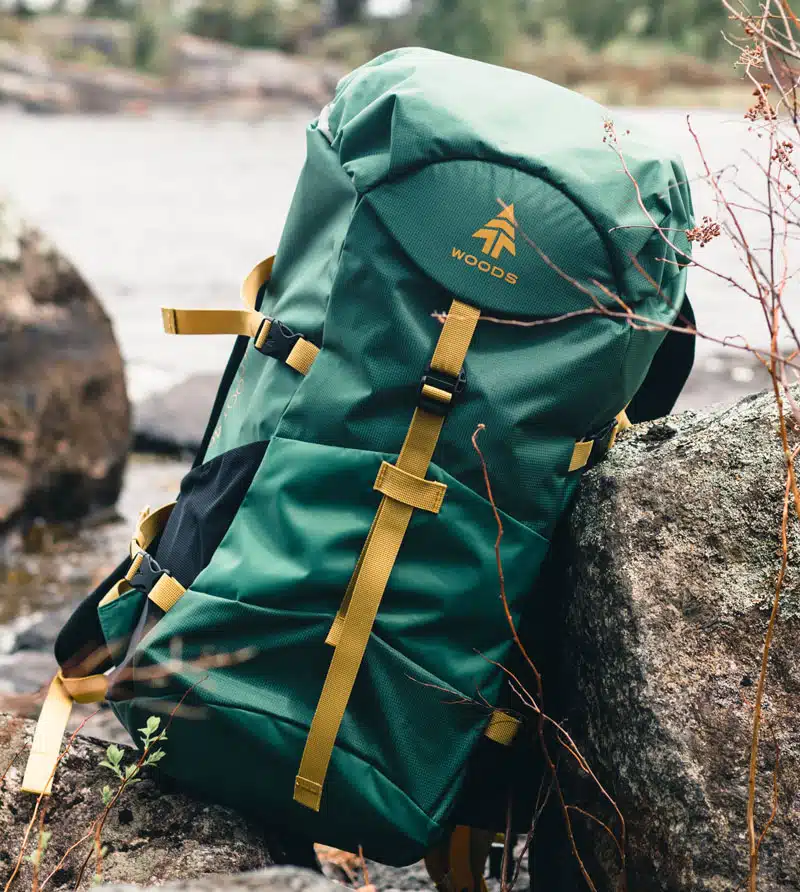
*This article is not intended to provide expert advice regarding matters of preparedness. The information/material provided is intended for informational purposes only. No information/material in this article is intended to substitute for professional advice, personal responsibility, or personal research. Carefully evaluate your personal situation and seek expert advice when needed.
